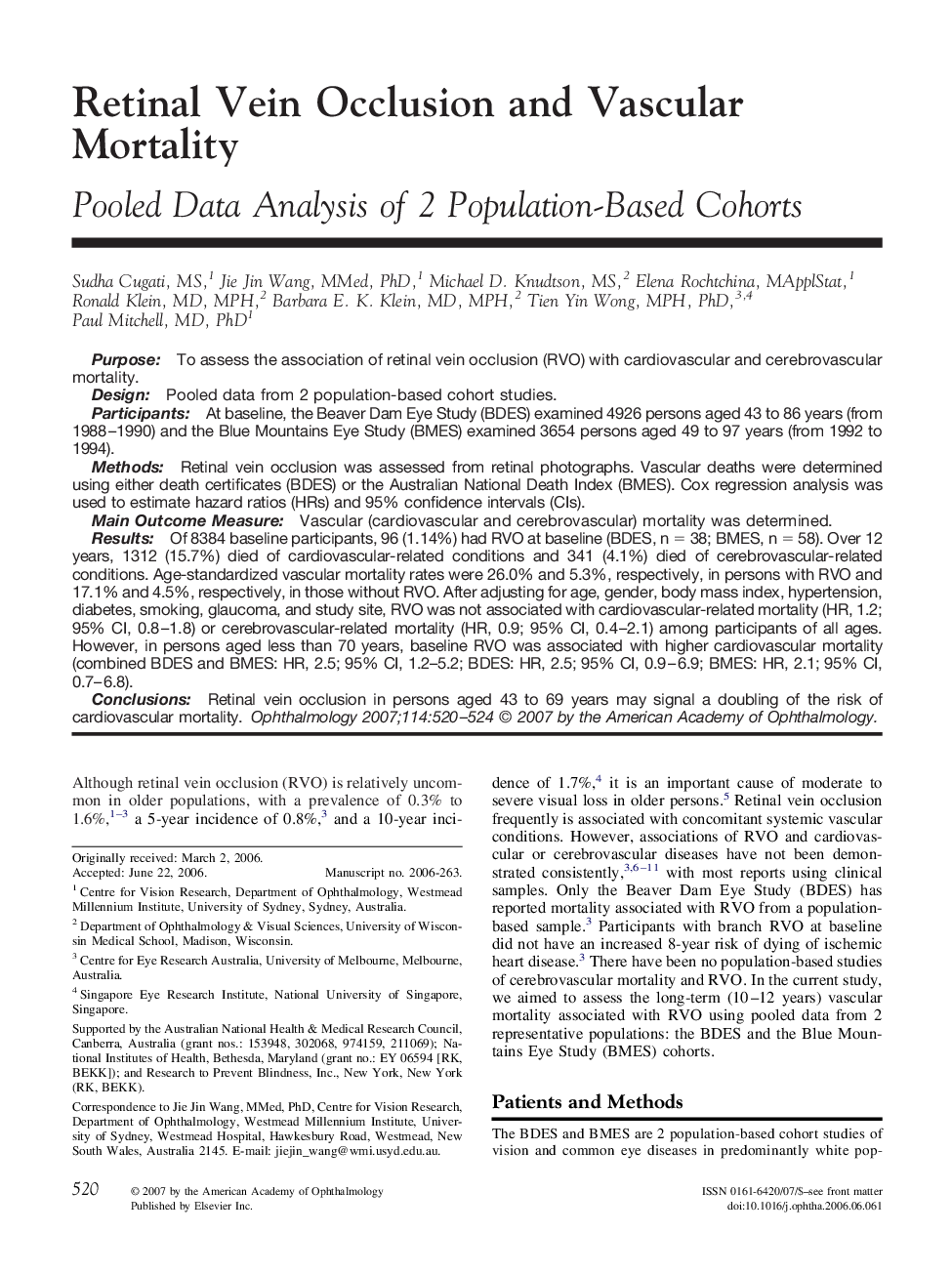| Article ID | Journal | Published Year | Pages | File Type |
|---|---|---|---|---|
| 4030557 | Ophthalmology | 2007 | 5 Pages |
PurposeTo assess the association of retinal vein occlusion (RVO) with cardiovascular and cerebrovascular mortality.DesignPooled data from 2 population-based cohort studies.ParticipantsAt baseline, the Beaver Dam Eye Study (BDES) examined 4926 persons aged 43 to 86 years (from 1988–1990) and the Blue Mountains Eye Study (BMES) examined 3654 persons aged 49 to 97 years (from 1992 to 1994).MethodsRetinal vein occlusion was assessed from retinal photographs. Vascular deaths were determined using either death certificates (BDES) or the Australian National Death Index (BMES). Cox regression analysis was used to estimate hazard ratios (HRs) and 95% confidence intervals (CIs).Main Outcome MeasureVascular (cardiovascular and cerebrovascular) mortality was determined.ResultsOf 8384 baseline participants, 96 (1.14%) had RVO at baseline (BDES, n = 38; BMES, n = 58). Over 12 years, 1312 (15.7%) died of cardiovascular-related conditions and 341 (4.1%) died of cerebrovascular-related conditions. Age-standardized vascular mortality rates were 26.0% and 5.3%, respectively, in persons with RVO and 17.1% and 4.5%, respectively, in those without RVO. After adjusting for age, gender, body mass index, hypertension, diabetes, smoking, glaucoma, and study site, RVO was not associated with cardiovascular-related mortality (HR, 1.2; 95% CI, 0.8–1.8) or cerebrovascular-related mortality (HR, 0.9; 95% CI, 0.4–2.1) among participants of all ages. However, in persons aged less than 70 years, baseline RVO was associated with higher cardiovascular mortality (combined BDES and BMES: HR, 2.5; 95% CI, 1.2–5.2; BDES: HR, 2.5; 95% CI, 0.9–6.9; BMES: HR, 2.1; 95% CI, 0.7–6.8).ConclusionsRetinal vein occlusion in persons aged 43 to 69 years may signal a doubling of the risk of cardiovascular mortality.
